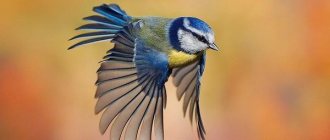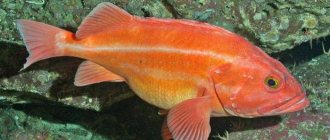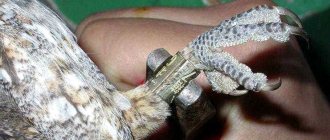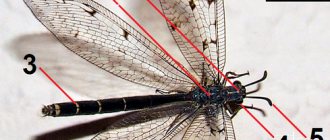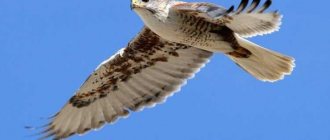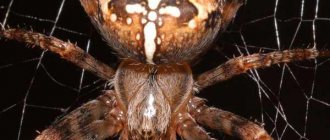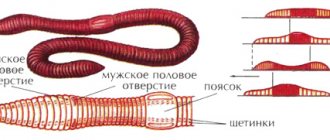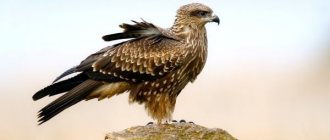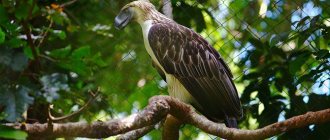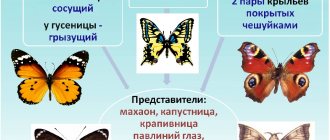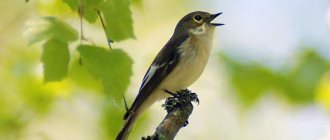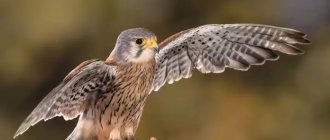The class of birds is a well-separated group of vertebrates, the most characteristic features of which are feather cover and the ability to fly. The method of movement left its mark on the internal and external structure of birds, as well as on the physiology and metabolic processes.
The science that studies birds is called ornithology.
a brief description of
Birds are highly organized animals. Their high numbers and widespread distribution across the planet make them an important part of ecosystems and human activity.
Currently, the class includes 10,738 species; 789 species live in Russia.
The main characteristic features of birds are the ability to fly and associated structural features, laying eggs, and the presence of a beak.
Some species make long migrations, others roam within their habitats, and others lead a sedentary lifestyle.
In the process of evolution, birds have developed systems of visual and sound communications. They can perform actions in a group: joint nesting, hunting, protection.
Birds are of great importance in the economy. Poultry farming in the modern world is one of the leading branches of agriculture. Birds are often kept as pets.
Human activities have a significant impact on members of the class, changing their lifestyle and habitats. As a result of these changes, more than 1,000 bird species are on the verge of extinction.
Nervous system and sensory organs
Nervous system of the pigeon
The brain has relatively large hemispheres and optic lobes, a well-developed cerebellum and very small olfactory lobes. The way of life of birds left its mark on the structure of the sense organs.
Birds have underdeveloped olfactory organs, but their visual organs achieve exceptional development. They differ from the eyes of reptiles in double accommodation, which is achieved by changing the shape of the lens and the distance between the lens and the retina. This property is associated with the enormous importance of vision during flight.
Most birds have eyes located on the sides of their heads. The field of vision of each eye is 150-170°, but the field of binocular vision is small and in many birds is only 20-30°. In owls and some birds of prey, the eyes shift toward the beak and the field of binocular vision increases. Some bird species have a 360° field of view.
The hearing organs are well developed, which have three sections: the inner, middle and outer ear.
Signs of birds
Birds live in a wide variety of environments. Their habitats and feeding habits leave a significant imprint on their appearance.
Nevertheless, representatives of the class are characterized by common features:
- forelimbs in the form of wings;
- the skin is dry, devoid of glands, covered with feathers;
- streamlined body shape;
- specific structure of the hind limbs (position of the fingers, tarsus);
- the jaws have been transformed into a beak;
- complete separation of blood circulation and warm-bloodedness as a result of the appearance of a four-chambered heart.
Skeletal structure of birds
The skeleton of birds is strong and light. Bones fuse at an early age, providing strength. The low total mass is achieved by the tubular structure of the bones and the presence of air cavities.
The skull is similar in structure to that of mammals. The difference is the presence of a beak, a lighter box and larger eye sockets.
The structure of the spine is divided into sections: cervical, thoracic, lumbar, sacral and caudal. The greatest mobility is in the cervical region. The sacral and lumbar vertebrae are fused with the pelvic bones. The bones of the shoulder girdle are also fused, forming a strong support for the bones and muscles of the wings.
The sternum grows, forming a protrusion called the keel - the attachment point for the powerful pectoral muscles that ensure the operation of the wing.
The upper limbs have typical sections: humerus, ulna, radius, fused bones of the hand. Only three toes remain free.
The pelvic bones serve as support for the hind limbs. The ilia are fused to the complex sacrum, and the pubic bones are free, allowing large eggs to be laid.
The hind limbs are composed of typical bones. The tibia and fibula are fused. Three out of four fingers point forward, one back.
Skeleton and muscles
The ability to fly is provided by the lightness of the hollow bones of birds. But at the same time their skeleton has high strength. The supporting apparatus includes the spine, bones of the limbs and girdles, and the skull. The skeleton provides protection for internal organs.
The volume of the skull in birds is quite large. The jaws are transformed into a beak, there are no teeth. The spine is divided into separate parts:
- tail;
- lumbar;
- sacral;
- chest;
- cervical
The cervical spine has a special structure. With its help, the bird can freely turn its head more than 270 degrees.
The thoracic vertebrae are fused, resulting in a single bone. The ribs are attached to it. Flying birds have a keel in the thoracic region - a large growth where the muscles that move the wings are attached.
The lumbar and sacral sections are also fused. This is necessary to ensure sufficient pelvic support. The tail vertebrae form the coccygeal bone.
The shoulder girdle includes 3 pairs of bones:
- crow;
- shoulder blades;
- collarbone.
The wing consists of the carpal and humerus bones, as well as the forearm. The pelvic bones connected to the vertebrae act as a support for the lower extremities. The structure of the leg includes the tarsus, toes, shin and thigh.
The work of the wings is provided by muscles that stretch from the keel to the shoulder. Birds have very developed muscles in this section.
The lower limbs have a rather interesting structure. Tendons connected to the fingers are stretched through the joints of the paws. When an animal sits on a tree, it bends its legs. This causes tension in the tendons, causing the fingers to grip the branch. This allows birds to sleep while sitting in trees.
Propulsion system
Birds' muscles allow them to perform complex movements with a high degree of coordination. The organs of movement of flying birds are wings.
The pectoral muscles are the most developed (up to 1/5 of the total body weight).
Birds that have lost the ability to fly have powerful leg muscles that allow them to run quickly on the ground.
Interesting Facts
Birds are one of the most common classes of animals. In addition to differences in structure, there are also interesting features unique to birds. Among them are the following:
- Birds have no teeth. It is believed that this is necessary to reduce body weight to make it easier to fly.
- Some species have a wingspan of up to 3 meters. The most striking example is the albatross.
- Each bird has about 20,000 feathers.
- Once a year, these animals molt, completely changing their feather cover. But this process occurs gradually, so the birds do not lose the ability to fly.
- The pink color of flamingo feathers is due to the fact that they eat crustaceans, which contain a large amount of pigment - a coloring substance.
Studying the internal structure of birds is a complex matter. There are a huge number of bird species, each of which has its own characteristics. But they all have common features, thanks to which scientists have combined birds into a separate class.
Veils
The skin of birds is practically devoid of sebaceous and port glands. All that remains is the coccygeal gland, the secretion of which lubricates the feathers to protect them from moisture and increase aerodynamics.
Horny derivatives of the skin are feathers; they cover the body of birds, protecting and ensuring flight. There are contour and down feathers, which differ in structure and function.
Digestive system
The high metabolism of birds is supported by a digestive system of a specific structure. Food captured by the beak travels through the esophagus into the crop, where it swells and begins to be digested.
The anterior section of the stomach is glandular, where the chemical breakdown of nutrients takes place; in the second section, the muscular section, mechanical grinding of food masses takes place. Afterwards come the duodenum and small and large intestine, which opens into the cloaca, along with the ducts of the excretory and reproductive systems.
Digestive enzymes are synthesized by the pancreas and liver.
Reproductive organs and egg structure
Males have paired reproductive organs. The female has only the left ovary and the left oviduct, which opens into the cloaca. Fertilization in birds is internal. The inner part of the egg is the yolk, on the surface of which there is a germinal disc. The yolk is covered with a thin yolk membrane, attached to it on both sides are chalazae twisted by cords, extending from the inner subscarloupe membrane.
They maintain the yolk in suspension so that the germinal disc is always on top, regardless of the position of the egg. The subshell membranes stratify and form an air chamber. Through the pores that penetrate the calcareous shell, air enters the egg and gas exchange products of the embryo's vital activity are released.
General structure of the egg
The embryo in the egg of birds develops at a certain temperature. Therefore, adult birds incubate the eggs until they hatch. Incubators maintain the temperature and humidity necessary for embryo development.
Birds are divided into brood and nestling birds depending on the development of the chicks. Brood birds include those birds in which the chicks hatch from the egg developed, covered with down and capable of moving around in search of food immediately after drying. The chicks of the chicks are naked, blind and cannot feed on their own.
Birds have highly developed complex instincts associated with reproduction and caring for offspring. Most bird species take care of their offspring. They feed the chicks, warm them, save them from overheating by the sun's rays, keep the nest clean, protect them from enemies, etc.
Respiratory system
The ability to fly was determined by the special structure of the respiratory system. The lungs are spongy and consist of alveoli intertwined with capillaries.
Some bronchi, without dividing into bronchioles, extend beyond the lungs and form air sacs in the body cavity. These formations provide breathing during flight.
Air enters the bags when the wings rise in flight, and when lowered, it is squeezed out into the lungs.
Digestion and breathing
The first section of the digestive system of birds is the beak. It consists of jaw bones that are covered with horny sheaths. The shape is influenced by the method of obtaining food. These animals have no teeth. Birds swallow their food whole.
The esophagus easily stretches to significant sizes. Some species are able to completely fill it with food. At the same time, they do not experience any discomfort. In most representatives, a goiter is located at the end of the esophagus. This is a special extension where food reserves are accumulated.
The stomach includes two sections:
- glandular;
- muscular.
The glandular secretes gastric juice, which is necessary to soften food. The muscular section is designed for grinding food. To speed up this process, birds specifically swallow small pebbles.
After the stomach, food enters the intestines, which end in the cloaca. It also includes the excretory tract of the reproductive system and the ureters.
The respiratory system consists of lungs and air sacs located between the internal organs. The bags are connected to the lungs. They are necessary to ensure breathing during flight. At rest, only the lungs are used.
During flight, the air sacs expand and contract to provide air supply. The faster the birds flap their wings, the more intense the work of this department.
Circulatory system
In representatives of the class of birds, a separation of arterial and venous circulations appears for the first time.
The heart has four chambers, so venous and arterial blood pass through it without mixing. The consequence of separation is intense gas exchange and constant body temperature, that is, warm-bloodedness.
Biology at the Lyceum
Features of the internal structure of a pigeon
digestive system essentially has the same structure as has been observed in other vertebrates studied previously. But there are also differences. The esophagus expands into the crop, which serves to store food.
The bird's beak is not adapted to chewing food. This deficiency is compensated by the development of a “muscular” stomach, to help which the bird also collects... pebbles. The walls of the stomach contract, and the pebbles grind the food. Most birds eat fruits and seeds of plants.
However, animal food is also far from uncommon. But, in any case, food should be fairly easy to digest, because birds have short intestines. Digestion should proceed quickly.
Respiratory system. Compared to reptiles, the respiratory organs of birds are significantly modified. All the spaces between the organs in the bird's body are occupied by air sacs. Their volume is several times greater than the volume of the lungs themselves.
When you inhale, air passes through the airways into the lungs, and from there into the air sacs. When you exhale, air from the air sacs again enters the lungs and is then expelled from the body. Thanks to this, gas exchange in the lungs occurs much more intensely.
Circulatory system. Birds have a four-chambered . It consists of two atria and two ventricles . For this reason, arterial blood no longer mixes with venous blood.
The sequence of operation of the bird's circulatory system is as follows.
Small circle. From the right ventricle, venous blood flows through the pulmonary arteries to the lungs. Note that arteries are vessels leaving the heart. And arterial blood does not always flow through them. If these vessels lead from the heart to the lungs, venous blood flows through them. In the lungs it is saturated with oxygen, releases excess carbon dioxide and becomes arterial. The pulmonary vein carries arterial blood into the left atrium, and from there into the left ventricle.
Big circle. From the left ventricle, arterial blood is sent through the aorta through the systemic circulation to all tissues and organs. Here, in the capillary vessels, gas exchange occurs: the blood gives up oxygen and is saturated with carbon dioxide, that is, it becomes venous. It flows through the veins of the systemic circulation into the right atrium.
The speed of blood movement provides birds with an intense metabolism. For example, a pigeon's heart beats about 200 beats per minute (compare: a human's heart beats on average 50–70 beats per minute).
Excretory system. The excretory organs are paired kidneys. They are located in the pelvic area. There is no bladder. Pasty urine from the kidneys enters the cloaca through the ureters and is excreted from it.
